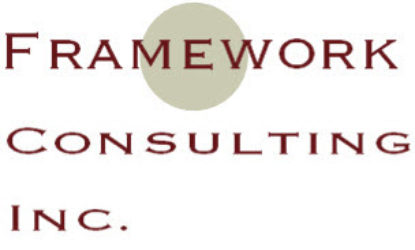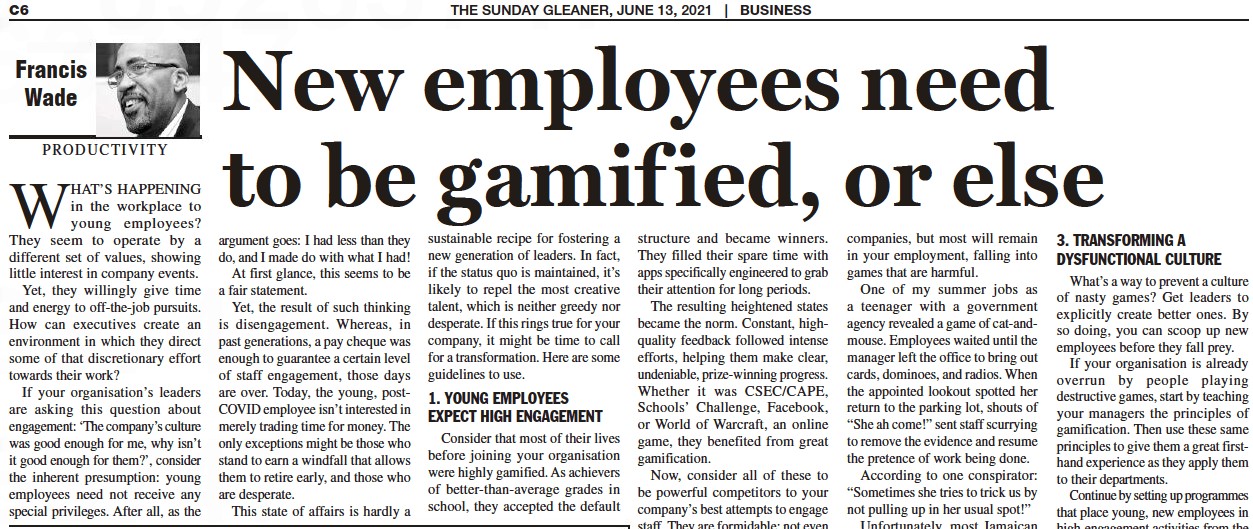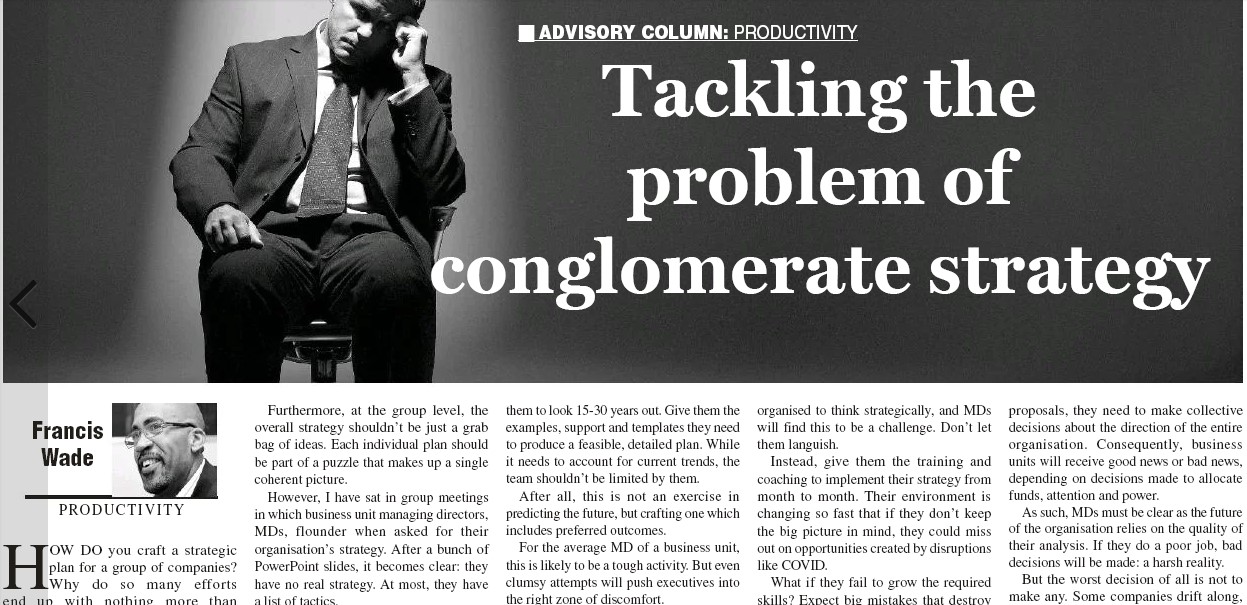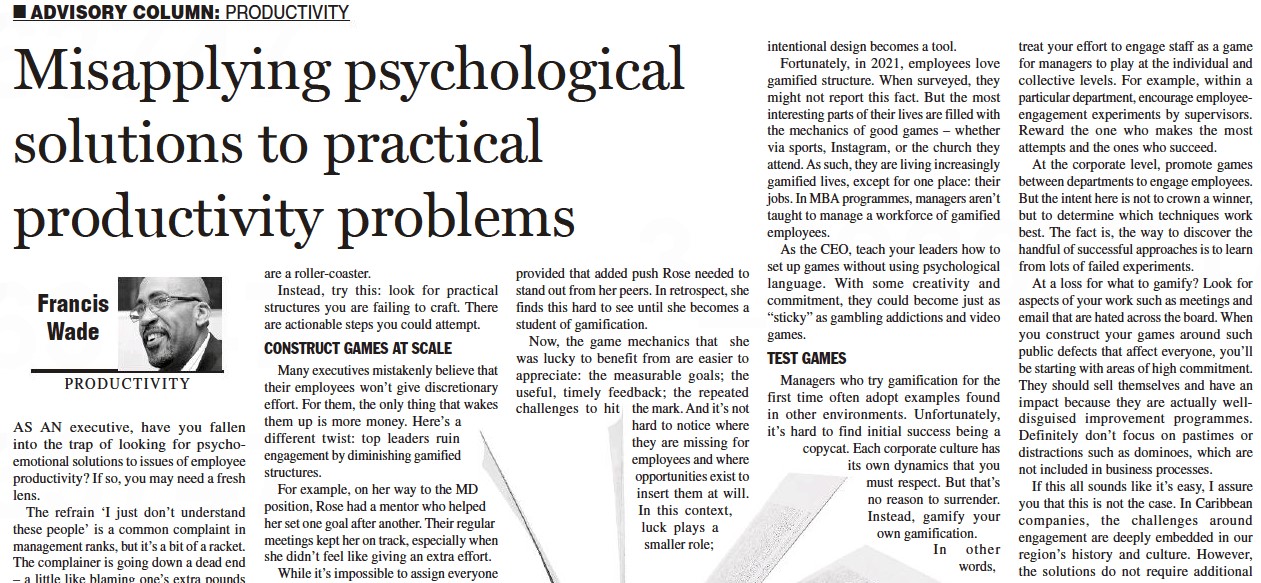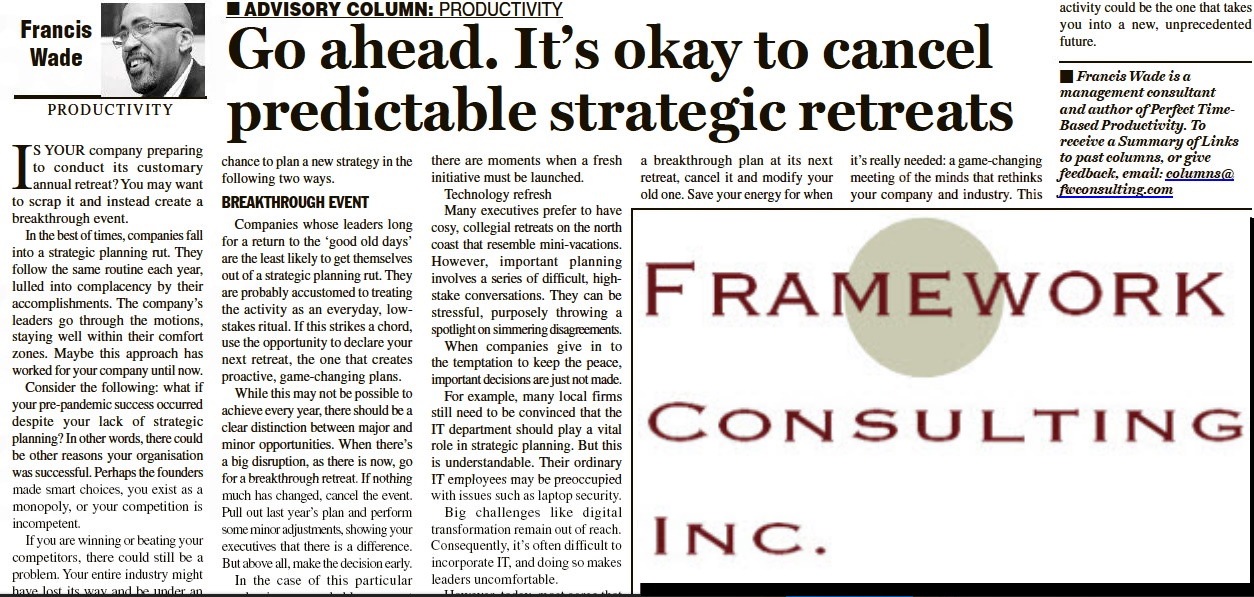In times past it was fashionable for corporate leaders to craft vision statements with commitments to be “number one” and “world class”. Lately, these have become less popular, with good reason. They are a sign of lackluster thinking which signals a lack of detailed planning.
Corporate leaders tend to fit a particular profile. They show strong Type A tendencies: energetic over-achievers who are time-sensitive and impatient. They drive themselves hard to accomplish great things, often bringing others behind them for the ride, ready or not.
However, if you have this trait, there may be an added one which gets you in trouble: your tendency to be competitive. If you get a lot of juice from beating other people, this approach works when goals are simple. It stirs up lots of extra effort and leads to reliable, continuous improvements.
Most CEO’s use this characteristic to grab the corner office ahead of others, at which point they often shift their focus to defeating other companies. This compulsion to be the captain of a winning team creates three kinds of problems.
Challenge #1 – CEO’s Play Games Employees Find Irrelevant
Part of being an effective executive involves learning the language of the C-Suite. Over time, this new lingo separates leaders from lower-level employees.
But the big problem is that what excites you, a Type A executive, is unlikely to inspire others. While staff knows there is a connection between EBITDA and their job security, it’s all a theory. Certainly, they feel no emotional bond.
As such, when you conduct a town hall you’re likely to speak glowingly of achievements in words that don’t resonate. You staffs’ needs are far more human, and it’s easy to lose track of them.
To build engagement, you’ll need to uncover employees’ actual aspirations, in order to satisfy them. For example, if getting their kids a decent education and making ends meet is a major part of their lives, you must start there.
Challenge #2 – CEO’s Craft Imaginary Competitions
The world is changing so rapidly that the old ways of thinking about competitors have become stale. In the past it was easier: ultra-competitive CEOs would find similar companies to compare themselves against. Then, they’d choose metrics such as profitability, stock price or revenue to be their yard-stick of accomplishment.
However, in a fast-changing landscape, your “competitors” are actually imaginary: made up. As industries and circumstances evolve, it becomes impossible to find other companies which are just like yours. There may be some overlap, but no perfect fit. Your orange ends up racing to a make-believe finish line against their apple.
As such, your claims to be (or plans to become) “Number One” are increasingly empty. They are a simplistic way to motivate yourself that may suit you, as a Type A executive, but no-one else.
Even aspirations to claim a “World-Class” standard look silly in today’s world. Anyone who cares can achieve this goal by defining a narrow standard. But even then, customers don’t care about such claims.
Challenge #3 – CEO’s Forsake Customers
While most MBA programmes are built around competition, that approach is becoming a distraction…at best a sideshow. It’s far better to develop a sharper focus on meeting customer’s unmet needs.
But this is no solid target. Customers’ needs are evolving due to new technologies so it’s become harder than ever to discover a customer’s “Job-to-be-Done”. (The term refers to the actions a customer takes to meet their unmet needs.)
The pandemic has led to shifts in many customers’ Jobs-to-be-Done, as they adopted new behavior patterns. Many companies unwittingly fell out of touch, and haven’t re-established a unique understanding. They run the risk of missing the mark.
Just observe the way Uber and AirBnB disrupted their respective industries before the pandemic. They used modern technology to tap into idle, low-cost resources (i.e. people’s cars and rooms). Now, they are shifting their processes to accommodate the new customer need for sanitized environments.
In short, they have been adjusting their companies’ business models, in concert with changes in their customers’ needs.
There are other ways your company can meet unmet needs, but when it happens, don’t be confused by your success. Definitely don’t claim it as proof of being “Number One” or “World Class” to start a new round of chest-beating.
Instead, use it as fuel to fire up a fresh cycle of customer research which, in the end, is the best insurance policy against disruptions of all kinds.
Francis Wade is the author of Perfect Time-Based Productivity, a keynote speaker and a management consultant. To search prior columns on productivity, strategy, engagement and business processes, send email to columns@fwconsulting.com
